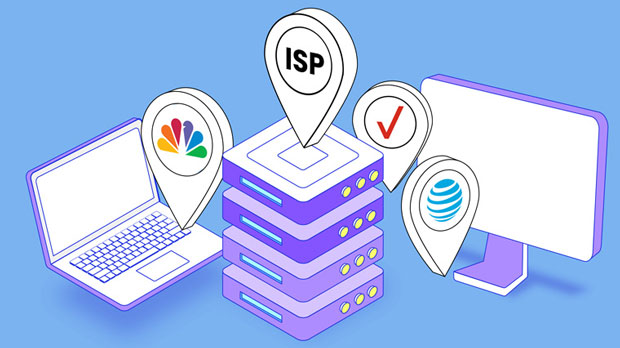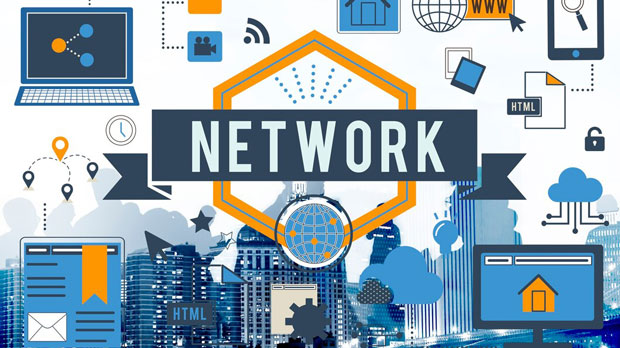HTTP Proxy vs SOCKS5 Proxy, Security Differences and Leakage Prevention
When it comes to online privacy and security, proxies are often used as intermediaries to protect users' identities and data from being exposed. Among the most commonly used types of proxies are HTTP proxies and socks5 proxies. While both are effective for hiding your IP address, they operate differently, offering distinct security features and protection levels. This article explores the security differences between HTTP proxies and SOCKS5 proxies, focusing on their ability to prevent leaks and ensure a more secure browsing experience. Understanding these differences can help users choose the right proxy solution based on their specific needs. What is an HTTP Proxy?An HTTP proxy acts as an intermediary between a client (such as a web browser) and the server hosting a website. It operates primarily for web traffic, which includes HTTP and HTTPS requests. When a user makes a request, the HTTP proxy forwards it to the destination server, masking the user's original IP address. It then relays the server's response back to the client.While HTTP proxies are commonly used for tasks like bypassing geographical restrictions or web scraping, they come with certain limitations in terms of security:1. Limited Protocol Support: HTTP proxies work only with HTTP or HTTPS protocols. They cannot handle other types of traffic such as FTP, SMTP, or peer-to-peer (P2P).2. Traffic Interception: Since HTTP proxies deal only with web traffic, they might not provide encryption for non-HTTP requests, leaving other types of data potentially exposed.3. No Full Tunnel: HTTP proxies are not designed to provide full encryption for all network traffic, which can make users vulnerable to attacks like Man-in-the-Middle (MITM) if not properly configured.What is a socks5 proxy?SOCKS5 proxies, on the other hand, are more versatile and secure. SOCKS5 is the latest version of the SOCKS protocol, designed to support a wide range of traffic types, including TCP and UDP. Unlike HTTP proxies, SOCKS5 proxies can handle any kind of internet traffic, from web browsing to gaming, torrents, and more.Some of the key benefits of SOCKS5 proxies include:1. Wide Protocol Compatibility: SOCKS5 proxies can work with virtually all protocols (HTTP, HTTPS, FTP, POP3, SMTP, etc.), which makes them more versatile than HTTP proxies.2. No Data Interception: SOCKS5 proxies simply forward data packets without modifying or inspecting the content, offering a higher degree of privacy. This minimizes the risk of data interception.3. Full Tunnel: SOCKS5 proxies can route all traffic through the proxy server, ensuring that all data, regardless of the application or protocol used, is encrypted and hidden from external entities.Security Differences: HTTP vs. SOCKS5While both HTTP and SOCKS5 proxies serve the primary purpose of hiding the user's IP address, their security features differ significantly.1. Encryption: HTTP proxies generally do not encrypt the traffic, meaning that even though your IP address is hidden, your data may still be exposed to attackers or anyone monitoring the network. In contrast, SOCKS5 proxies can support various encryption methods, especially when paired with technologies like Secure Sockets Layer (SSL) or Virtual Private Networks (VPNs), providing an added layer of security. 2. Traffic Handling: HTTP proxies are limited to handling only HTTP and HTTPS traffic, meaning that any other type of internet activity, like FTP transfers or gaming traffic, will not be masked. This creates a potential security risk, as sensitive data might still be transmitted unencrypted. SOCKS5 proxies, however, provide broader support for various types of traffic, which can be particularly useful for users who require secure handling of different data types. 3. Authentication: While HTTP proxies often allow basic authentication methods, they do not offer the same advanced authentication features that SOCKS5 proxies can. SOCKS5 supports both authentication and encryption, ensuring that only authorized users can access the proxy and that the traffic remains secure.4. Vulnerability to DNS Leaks: One common security risk with proxies is the potential for DNS leaks, which can occur if a DNS query is sent outside the proxy tunnel, revealing the user's true IP address. HTTP proxies are more susceptible to DNS leaks because they typically do not handle DNS queries in a secure manner. SOCKS5 proxies, however, can be configured to handle DNS queries within the proxy tunnel, reducing the risk of a DNS leak.Leak Prevention: How to Protect Your PrivacyBoth HTTP and SOCKS5 proxies come with inherent risks, and leak prevention is critical for maintaining online privacy. Here’s how both protocols compare when it comes to leak protection:1. DNS Leaks: As mentioned earlier, DNS leaks occur when a user's DNS queries bypass the proxy server and go directly to their ISP, exposing their real IP address. SOCKS5 proxies offer better leak prevention because they allow DNS queries to be handled through the proxy server, ensuring that all traffic remains anonymous. To prevent DNS leaks with HTTP proxies, users need to configure additional settings like DNS over HTTPS (DoH) or use third-party DNS services, which can be cumbersome and may not always work as expected.2. WebRTC Leaks: WebRTC (Web Real-Time Communication) is a technology used by browsers for peer-to-peer communication. However, WebRTC can potentially expose a user's real IP address even when using a proxy. SOCKS5 proxies, by virtue of their protocol support, tend to be less affected by WebRTC leaks than HTTP proxies, although users may still need to disable WebRTC in their browser settings for maximum privacy.3. IP and Port Forwarding: While HTTP proxies typically do not provide port forwarding features, SOCKS5 proxies often allow users to configure port forwarding, which adds an additional layer of control over the traffic flow. By forwarding specific ports, users can ensure that only desired traffic passes through the proxy, further minimizing the risk of unwanted data leaks.4. Application-level Protection: Many applications, such as torrent clients, can bypass proxy settings if not configured correctly. SOCKS5 proxies are more likely to be compatible with a wider range of applications, offering more comprehensive protection. This makes SOCKS5 a preferred option for users who need proxy support for applications like torrents or VoIP services.Choosing the Right Proxy for Your NeedsUltimately, the choice between an HTTP proxy and a SOCKS5 proxy depends on the specific security needs of the user.1. For Basic Web Browsing: If the main goal is to hide the IP address for web browsing and bypass geo-restrictions, an HTTP proxy may suffice. However, users should be aware of the limitations and security risks involved. 2. For Enhanced Security and Versatility: If you require a more secure and versatile solution that supports various types of internet traffic and provides better leak protection, a SOCKS5 proxy is the better choice. Its ability to handle diverse traffic, along with better encryption and leak prevention features, makes it the more secure option for most users.In conclusion, while both HTTP and SOCKS5 proxies serve the purpose of masking your IP address, the security features offered by SOCKS5 make it the superior choice for users who prioritize privacy, leak prevention, and overall network security. Understanding the differences between these two proxy types will help you make an informed decision about which one best suits your needs.
2025-01-03

























































